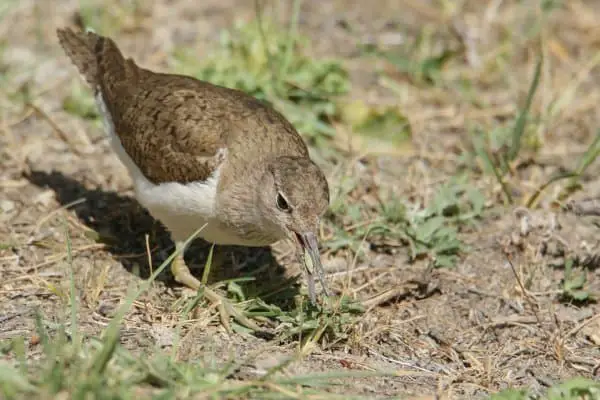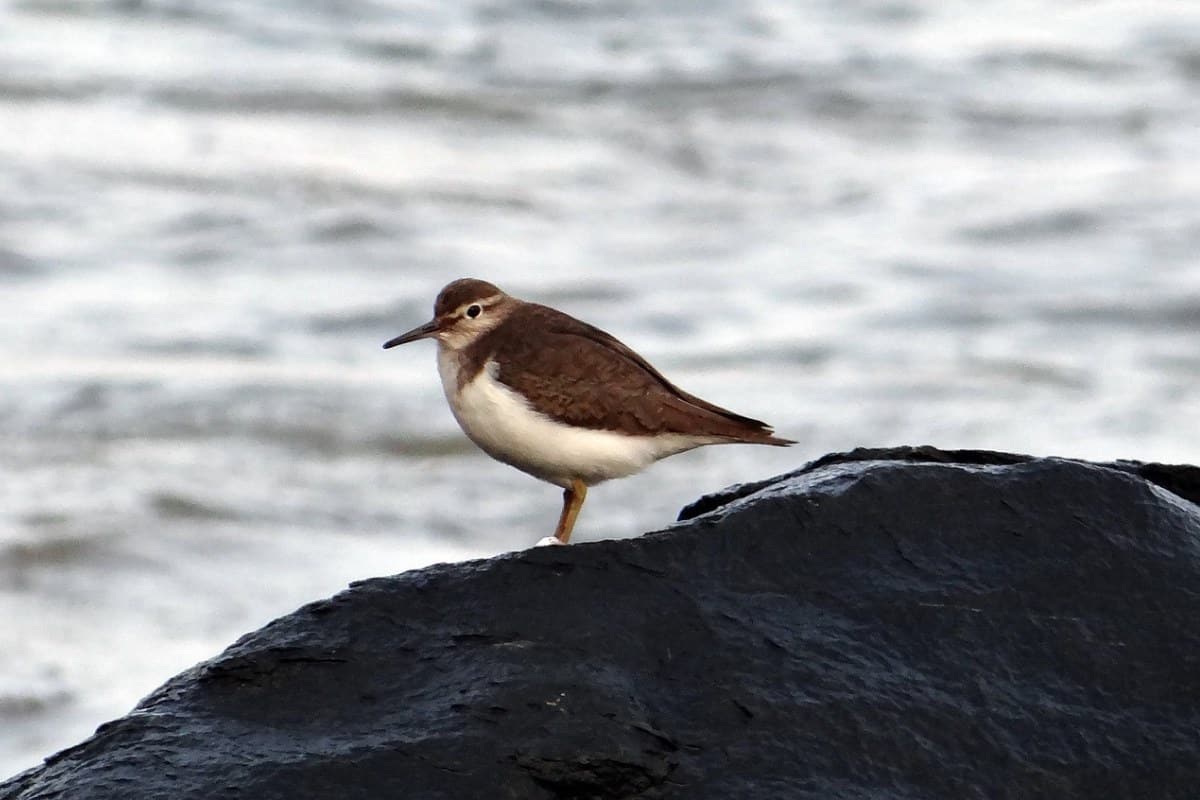Common Name: Common Sandpiper
Scientific Name: (Actitis hypoleucos)| Size | Diet | Range in Hawaii | Status in Hawaii |
|---|---|---|---|
| 7 in. - 8 in. | insects, crustaceans, and small mollusks | Big Island | Least Concern |
The Common Sandpiper, also known as Actitis hypoleucos, is a small shorebird species that is native to Europe, Asia, and Africa. While the species is not native to Hawaii, it has been known to occasionally visit the islands as a non-breeding visitor and vagrant. With its unique appearance and distinctive behavior, the Common Sandpiper is a fascinating bird species that has captured the attention of birdwatchers and avian enthusiasts around the world.
In this article, we will explore the world of the Common Sandpiper, its unique characteristics, and its occasional presence in Hawaii.
Common Sandpiper
Appearance

The Common Sandpiper is a dainty and charming wader that graces the shores with its elegant presence. Measuring about 7 to 8 inches in length, it’s a pint-sized wonder of the avian world. With a sleek and slender build, it boasts a striking appearance.
This bird sports a distinctive white belly that contrasts beautifully with its mottled brown upperparts. During the flight, its wings reveal a striking flash of white, adding an enchanting dimension to its otherwise subtle color palette.
Diet
The Common Sandpiper is a true “foodie” of the avian world, specializing in a menu of aquatic and terrestrial delicacies. Its diet revolves around a smorgasbord of tiny invertebrates, such as insects, crustaceans, and small mollusks, which it skillfully plucks from the sand or mud with its long, slender bill.
Nesting
Common Sandpipers choose their nesting sites with precision, typically favoring concealed spots along the edges of freshwater bodies, such as streams, rivers, or lakes. Their nests are often hidden among tall grasses, reeds, or rocks, providing both camouflage and protection for their precious clutch of eggs.
These nests are not elaborate affairs; they are simple, shallow scrapes in the ground, lined with a scant layer of leaves, twigs, or pebbles. The Common Sandpiper’s subtle choice of nesting materials ensures that their nests blend seamlessly with the natural surroundings.
Once the nest is ready, the female typically lays a clutch of four creamy, speckled eggs. The pair takes turns incubating the eggs, sharing the responsibility of keeping them warm and safe. Their attentive care continues after hatching, as they diligently feed and protect their fluffy chicks, teaching them the art of foraging along the water’s edge.
Behavior

These dainty waders are renowned for their distinctive bobbing motion, an almost rhythmic teeter-totter as they walk along the water’s edge. This behavior serves a dual purpose. First, it helps them spot their prey and second, it displays their charming personality, adding a touch of whimsy to their foraging routine.
Common Sandpipers are highly territorial during the breeding season, fiercely defending their chosen nesting sites along freshwater bodies. They engage in aerial displays, soaring above their territories with a series of melodious calls, creating a memorable spectacle for those fortunate enough to witness it.
These birds are also migratory marvels, embarking on long journeys between their breeding and wintering grounds. Their innate navigational abilities are remarkable, as they often migrate thousands of miles to find hospitable climates. It’s a testament to their tenacity and adaptability in the face of changing seasons and habitats.
In addition to their solo pursuits, Common Sandpipers are also social birds, often found in small flocks during migration. This communal behavior not only offers protection from predators but also creates an enchanting sight as they gather by the water’s edge.
Habitat

The Common Sandpiper is a versatile shorebird found in a range of habitats, including riverbanks, lakesides, and coastal mudflats. During the breeding season, they nest among tall grasses and reeds near freshwater sources. In winter, they migrate to estuaries and coastal areas, showcasing their adaptability and the rich diversity of their chosen habitats.
Range
The Common Sandpiper is an infrequent visitor to the Hawaiian Islands, primarily found in the Southeastern Hawaiian Islands. It is known to have over-wintered in Na’alehu, Hawai’i in the Southeastern Hawaiian Islands. Sightings in the Northwestern Hawaiian Islands, such as Kure, Midway, Laysan, and French Frigate, have also been documented, with valid records based on plumage characteristics.
Conservation Status
The conservation status of the Common Sandpiper is generally considered to be of “Least Concern” according to the International Union for Conservation of Nature (IUCN). This classification suggests that the overall population of Common Sandpipers is stable, and they do not face immediate threats of extinction.
Interesting Facts
1. Night flyers
During migration, Common Sandpipers are known for their night flights. They make the journey under the cover of darkness, using their keen navigation skills to find their way.
2. Mimetic nests
Common Sandpipers are known to create “fake” nests to divert potential predators away from their actual nest sites. These decoy nests serve as a clever strategy to protect their eggs and chicks.
3. Sexual dimorphism
Male and female Common Sandpipers can be distinguished by subtle differences in size, with males generally being slightly larger. However, these differences are not always easy to discern in the field.
4. Conservation heroes
Common Sandpipers are considered indicators of wetland health. Efforts to protect their habitats benefit not only these charming birds but also the entire ecosystem they rely on.
5. Solo parenting
While both parents share incubation duties, it’s often the female Common Sandpiper that takes on the majority of chick-rearing responsibilities after hatching. The male may depart for migration earlier.
Frequently Asked Questions
1. Are there any folklore or cultural associations with Common Sandpipers?
In some cultures, the presence of sandpipers on the shore is associated with the changing of seasons or weather patterns. They are sometimes seen as harbingers of natural transitions.
2. How long do Common Sandpipers live in the wild?
In the wild, Common Sandpipers can have a lifespan of approximately 6 to 7 years, but this can vary depending on factors like predation, environmental conditions, and food availability.
3. How do Common Sandpipers navigate during their long migrations?
While the exact mechanisms are not fully understood, it’s believed that Common Sandpipers use a combination of celestial cues, Earth’s magnetic field, and visual landmarks to navigate during migration.
4. Are Common Sandpipers found worldwide?
Common Sandpipers have a wide distribution range across Europe, Asia, and parts of Africa. However, their presence may vary by region and season.
5. How can people contribute to the conservation of Common Sandpipers and their habitats?
Individuals can contribute to conservation efforts by supporting wetland protection, advocating for responsible land use, participating in citizen science programs, and promoting awareness of the importance of these birds and their habitats.




